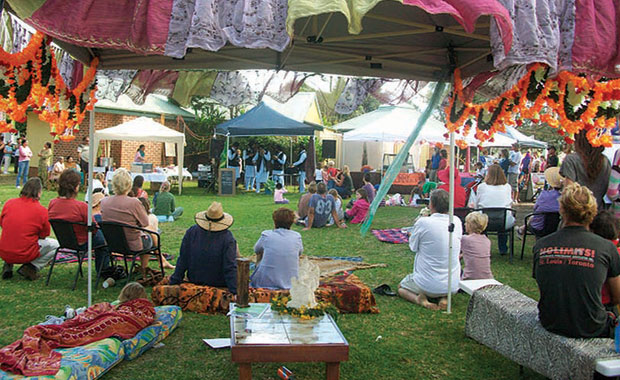PUNJAB DOWN UNDER
Woolgoolga
Country: Australia

Little India
For Punjabi Sikhs, after they have found means of livelihood and have become a little more established, religious beliefs and practices start becoming an integral part of their lives. In the beginning, they practiced their culture, religion, and traditions privately for fear of being harassed. Then they dared to organize occasional gatherings at people’s homes and celebrated religious festivals. Eventually in 1968 they built the first Sikh temple, and three years later, another one . Now, Woolgoolga has two Sikh temples (Gurdwaras), the Sikh Temple of Woolgoolga and the Guru Nanak Gurdwara which is a major attraction for the tourists. The tour operators driving on the northern route from Sydney, along the coast towards Brisbane, regularly stop tourist buses to see the temple and museum on Sikhism, and to inform tourists about the origin and cultural practices of the local Punjabi Sikh community in Woolgoolga.
During the Olympic games of 2000, Mr Harmohan Singh Walia (see profile in the book), dressed in Punjabi attire and turban, carried the Olympic torch as part of the Australian contingent. It was a proud moment for the Sikh community at Woolgoolga to see the Olympic torch change hands outside their Sikh temple.
Banana farming is not the only means for Punjabi Sikhs of the town to make a living. Many descendants of the early settlers went for schooling to earn higher degrees in various professions and are solicitors, teachers, doctors, engineers, town planners, accountants and policemen. Some of them have earned name, fame and riches in their chosen professions. But despite significant population in the town, success in the professions and businesses, Punjabis have not yet entered the political field as their counterparts in England and Canada.
Punjabi Sikhs have maintained their culture, religion and heritage and many of them have also retained the distinguishing marks of their faith. They have invariably added to the ethnic and cultural diversity of Australia and have become part of the unique and distinctive multicultural character of their new country. They have contributed to the development of local economy at all levels and reshaped the landscape of the cities and towns where they have their homes.
—Contributed by GOPIO Chairman Inder Singh











Comments.